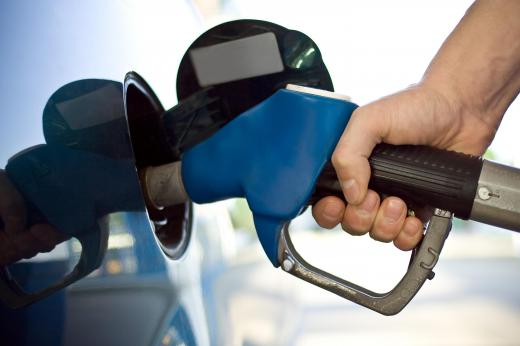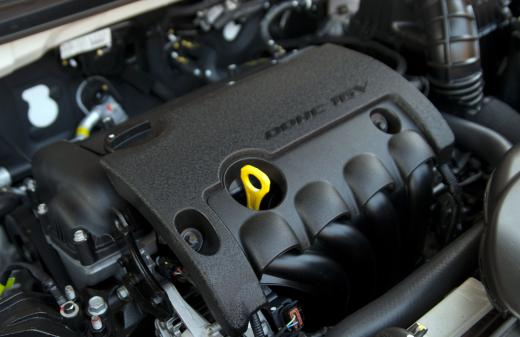What is Internal Combustion?
 Mary McMahon
Mary McMahon
Internal combustion is literally the driving force behind trains, planes, and automobiles. It is a method of energy generation in which combustion takes place in a controlled chamber or chambers inside an engine to generate mechanical energy. Internal combustion engines were developed in the 1800s, and they are widely regarded as a major mechanical innovation. Many people use or benefit from an internal combustion engine every day, whether they are taking a bus to work, using a gasoline generator to power a home, or driving to the beach.
There are a number of different ways to use the energy generated by internal combustion. In all cases, the technology involves the use of a fuel-air mixture to create controlled explosions. The explosions create a great deal of energy which pushes a piston, turning the force of the explosion into mechanical energy which can be converted into motion, such as the spinning of the wheels in a car or the movement of a turbine in a jet engine. The more pistons an engine has, the more energy it can generate.

Engines which utilize internal combustion for energy have a number of components, which can vary slightly, depending on the nature of the engine and its age. Most engines follow a two or four stroke cycle, meaning that the piston inside the cylinder moves through two or four positions in each cycle of the engine. Four stroke engines tend to be more common; cars, for example, use a four stroke method, while lawnmowers are commonly two stroke engines.

One of the problems with internal combustion is that it generates high temperature, high pressure exhaust fumes which must be vented away from the engine. These fumes commonly contain pollutants generated by the burning of the fuel in the cylinder. Many engines have filtration systems in place which are designed to trap pollutants, and the internal combustion design has been refined to increase efficiency and minimize the production of pollutants. Even with these measures, however, large amounts of pollution are generated annually by boats, planes, cars, trucks, buses, and trains.

Prior to the internal combustion engine, people used external combustion to generate mechanical energy. One of the classic examples of an external combustion engine is a steam engine such as that used historically to power trains and some types of factory equipment. While internal combustion is generally preferred today, external combustion engines can still be seen at work in various corners of the world, sometimes as novelties and sometimes as actual working engines.
AS FEATURED ON:
AS FEATURED ON:













Discussion Comments
who made the internal combustion engine?
Post your comments